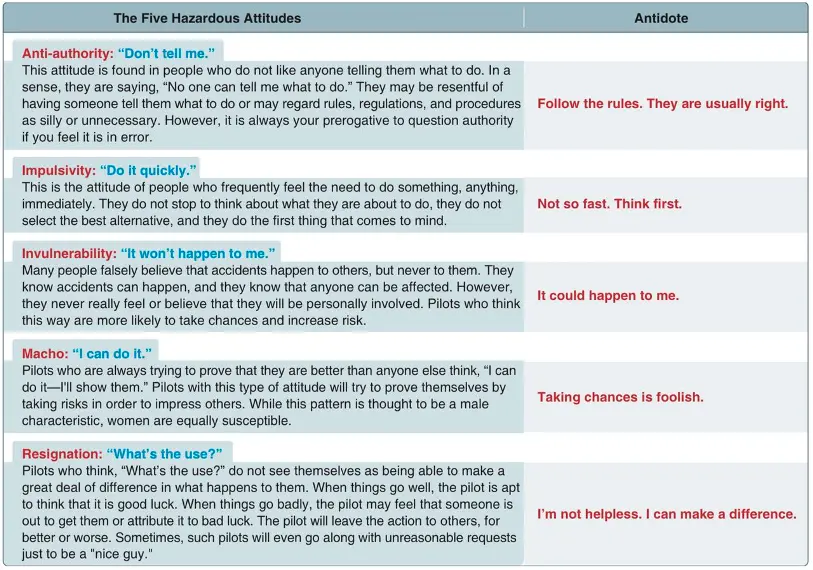
In order to operate an aircraft safely, it is crucial to understand the concept of hazard and risk as well as the differences between them.
A hazard is a real or perceived condition, event, or circumstance that a pilot encounters. A risk is a pilot’s assessment of a hazard faced, in which the pilot assigns a value to the potential impact of the hazard (based on various factors). Risks are an assessment of a single or possibly even cumulative hazard a pilot may face. The danger is that different pilots see the same hazards differently.
For example, let's evaluate a situation where a pilot arrives to preflight his aircraft. During his preflight he discovers a small nick in the leading edge at the middle of the aircraft prop. Since the aircraft is parked on the ramp, the nick was probably caused by another aircraft’s prop blowing debris into the parked aircraft’s prop. In this example, the nick is the hazard (a present condition). The risk is prop fracture (a future condition) if the engine is operated with damage to a prop blade.
An experienced pilot might assess the nick as low risk, understanding that the nick diffuses over large area, and is located in the strongest portion of the propeller. Therefore, the pilot does not expect the nick (the hazard) to lead to a prop fracture (a risk) and does not cancel the flight. An inexperienced pilot who is unsure what affect the nick (the hazard) will have on the operation of the prop believes the nick could lead to prop fracture (a risk) and subsequently cancels the flight.
To ensure a safe flight, a pilot must do more than preflight the aircraft. A pilot must ensure that his physical condition, recent experience, and attitude are all conducive to a successful response to people and situations.
There are five hazardous attitudes that pilot’s must be aware of, and corresponding antidotes to neutralize hazards and reduce risks. The first step towards neutralizing hazardous thoughts is recognizing the thought as hazardous and labeling it as such. Then, the pilot should state the corresponding antidote. Antidotes for each of the five hazardous attitudes should be memorized so that they easily come to mind when the situation arises.

By Engine Sales Representative, Joshua Denton
[Editor’s Note]: Image taken from the FAA Pilot’s Handbook of Aeronautical Knowledge.
YOU MAY ALSO LIKE:
Understanding the Aircraft Spark Plug - When it comes to the intricate machinery of aircraft engines, even the smallest components play a crucial role.
A Pilot's Guide to Pre-Flight Checks - This guide provides an in-depth exploration of the nuances and intricacies of pre-flight inspections, empowering you to perform them with absolute confidence.
Pilot Certifications Part 1: Sport Pilot Certificate - Each type of pilot certificate has different eligibility, training, experience, and testing requirements.
*SHOP ENGINE PARTS HERE!*
Find What You Need at Air Power Inc.!
Questions? Our team is ready to assist you anytime. Your aviation success starts at Air Power!
CONTACT US






